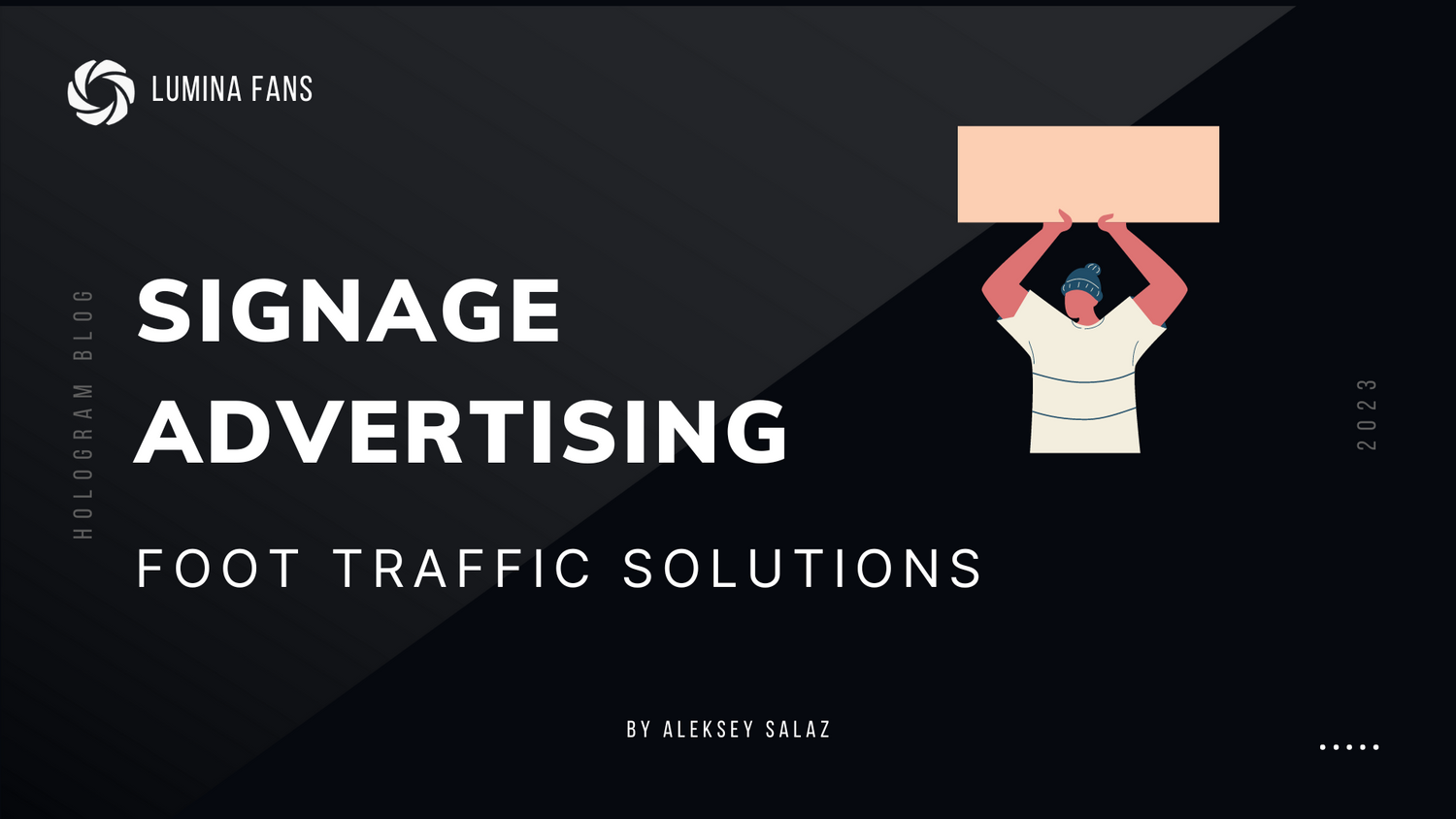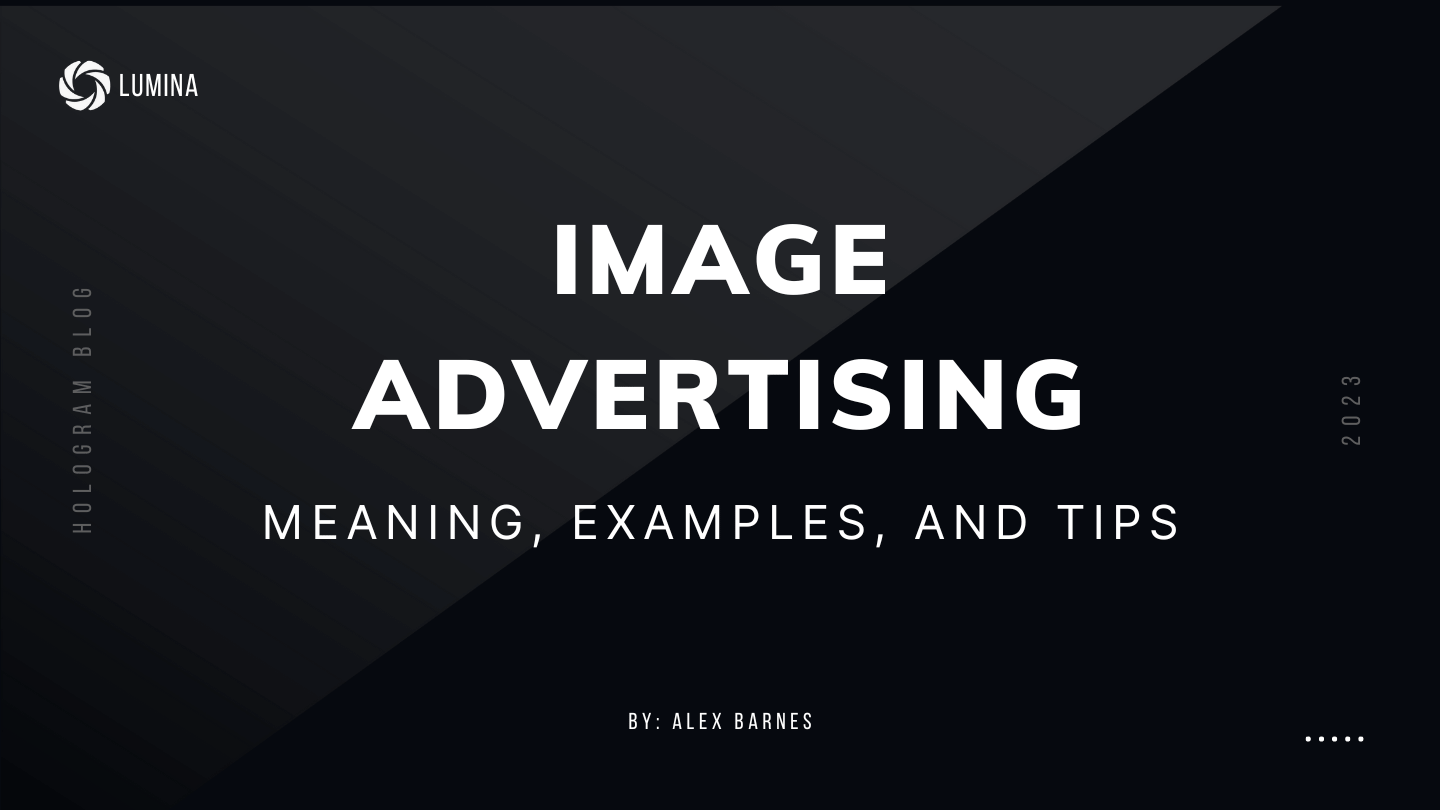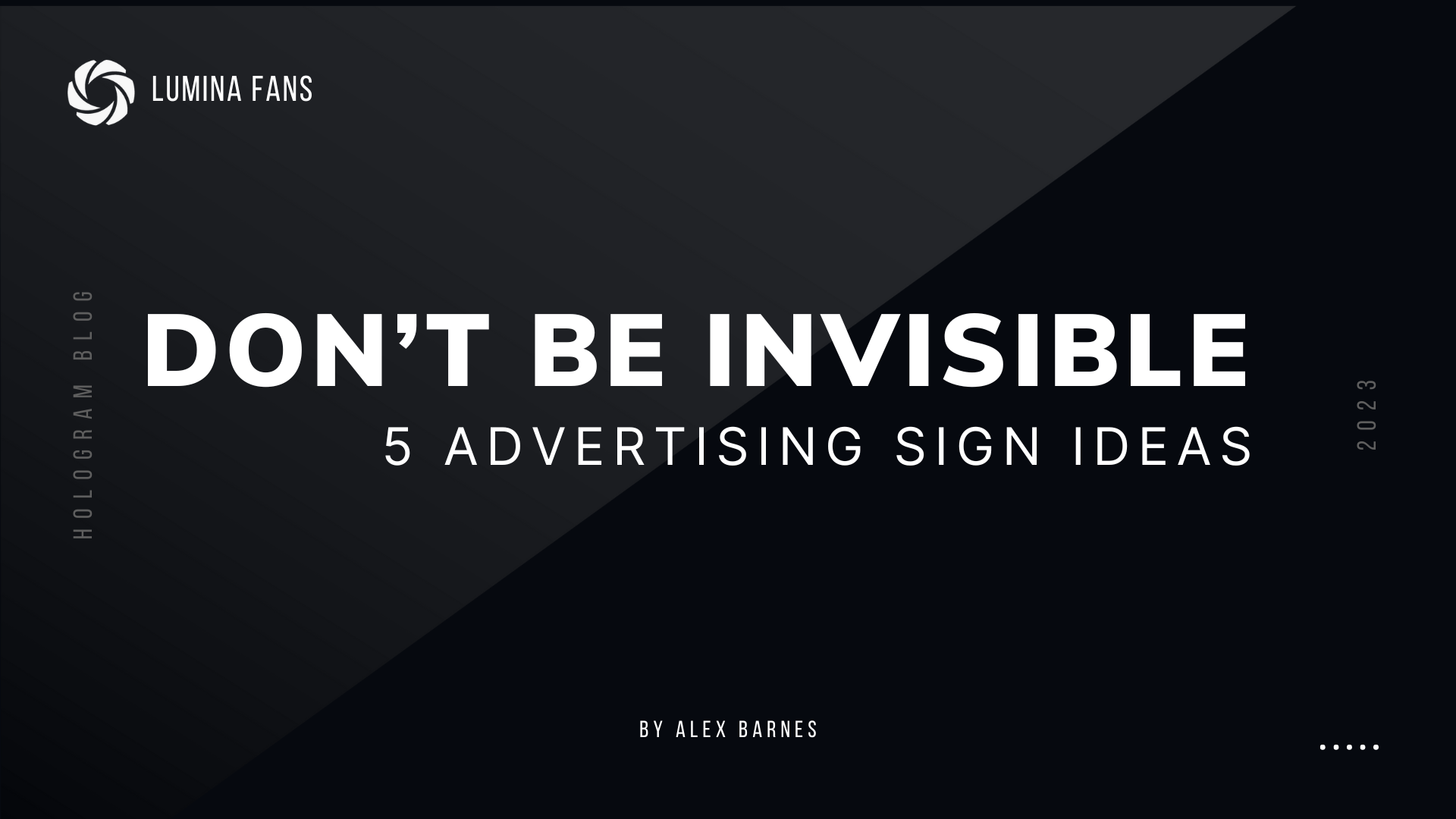Welcome to the world of signage advertising!
This is a key way for businesses to get more people to visit. Think of signs as more than just showing information. They can actually draw in crowds, turning people who just walk by into potential customers.
Whether you run a store and want more shoppers, or you're showing off your stuff at a trade show, knowing about signage advertising is really important.
Understanding Signage Advertising
What is Signage Advertising?
Signage advertising is a powerful tool for communication. It uses signs to share information about businesses, products, or services. But it's more than just displaying information; it's about capturing attention and engaging people.
The Many Forms of Signage Advertising
There are several types of signage advertising, each with unique benefits. Traditional options include billboards and storefront signs. Digital signs offer dynamic and changeable messages. Interactive signs engage people directly, like those with QR codes for scanning.

The right type of signage can significantly impact your marketing success.
The Impact of Signage Advertising
Why is signage advertising so effective? It's direct and captures attention quickly, making it ideal for high-traffic areas like malls or trade shows.
Signage advertising is not just about visibility; it's also an opportunity to convey your brand's story and uniqueness in a crowded marketplace.
The Impact of Signage Advertising on Foot Traffic
Driving Foot Traffic with Effective Signage
Signage advertising plays a crucial role in attracting foot traffic. A strategically placed and creatively designed sign can significantly increase the number of visitors to your store or exhibition booth.
Importance of Location
Choosing the right location for your signage is key. Place signs where they are highly visible to passersby.

Consider high-traffic areas like busy streets, shopping centers, and public squares. The goal is to catch the attention of a large audience.
Design Elements That Stand Out
Your sign's design should be eye-catching. Use bright colors, bold fonts, and unique graphics. This helps your sign stand out in a crowded environment. Ensure the message is clear and concise. People should understand it at a glance.
Utilizing Technology
Incorporate digital technology into your signs. Digital signs are more dynamic and can display changing messages or videos.

This attracts more attention than static signs. It's a great way to keep content fresh and engaging.
Creating an Emotional Connection
Use signage that creates an emotional connection with the audience. This can be through humor, inspiring messages, or relatable images. Emotional connections increase the likelihood of people remembering your brand and visiting your store.
Consistency in Branding
Ensure your signage aligns with your brand identity. Consistent use of colors, logos, and messaging strengthens brand recognition. This makes it easier for potential customers to identify and remember your business.
Strategic Promotions and Offers
Highlight special promotions or offers on your signs. This can be a powerful incentive for people to visit your store. Make sure these offers are attractive and clearly communicated.
Statistics and Real-World Examples
Burger King and McDonald's Signage Strategy
A survey at a Burger King branch showed that 35% of customers noticed the restaurant by seeing it while passing. McDonald's also heavily invests in their signage, particularly the golden arches, to reinforce brand recognition.

This strategy is echoed by other fast-food chains like Subway and Domino's.
Belmont Auto Spa's Signage Transformation
Belmont Auto Spa's new $15,000 pole sign led to a 125% increase in detailing service sales and a $135,000 overall business sales boost in the first year.
Retail Lightbulb Test by Selby’s
Selby's study showed that effective signage increased average unit sales by 9% to 43%, demonstrating the importance of sign design in retail settings.
University of Cincinnati Study on Signage Impact
20% of people entered a store based on sign quality, and 60% of businesses that improved their signage saw a 10% sales increase.
Digital Signage Impact at Anderson Ford and Value Place
Anderson Ford saw a 4.5% increase in service customers every two months after installing digital signage.

Locations of Value Place with digital signage outperformed others, especially in Q4, showing a 10% better performance.
Psychology Behind Signage Attraction
What makes signage so effective in drawing attention? It's partly due to psychological factors. The right combination of colors, shapes, and messages can significantly influence consumer behavior.
For example, using bold colors like red and yellow can create a sense of urgency, while clear, concise messaging can effectively communicate your brand's value proposition.
Types of Signage Advertising
Traditional Signage

Examples: Billboards, Banners, Storefront Signs.
Pros: High visibility, wide reach, familiarity to customers.
Cons: Limited interaction, static content, potential for weather-related damage, and higher costs for prime locations.
Digital Signage

Examples: Digital Billboards, LED Displays, Interactive Kiosks.
Pros: Dynamic content, real-time updates, interactive options, and high engagement potential.
Cons: Higher initial investment, requires technical maintenance, and potential technical glitches.
Interactive Signage

Examples: Touchscreen Kiosks, Augmented Reality Displays.
Pros: High customer engagement, personalized experiences, modern appeal, and data collection capabilities.
Cons: High cost, technical complexity, requires regular content updates, and potential privacy concerns with data collection.
Holographic Fan Displays

Examples: 3D Holographic Fan Displays, Interactive Holographic Exhibits.
Pros: Cutting-edge visual appeal, high engagement, unique 3D content presentation, and energy efficiency.
Cons: Relatively high cost, limited viewing angles, content creation complexity, and the need for specific lighting conditions to maximize visibility.
Design Principles for Effective Signage
Color and Visual Appeal
Importance: Colors play a crucial role in attracting attention and conveying emotions. Bright and contrasting colors can be eye-catching, while a harmonious color scheme can reflect brand identity.
Pros: Effective use of color can increase brand recognition and attract attention.
Possible Pitfalls: Overuse or poor color combinations can lead to visual clutter or misinterpretation.
Font and Readability
Importance: The choice of font is essential for readability and brand representation. Clear, legible fonts ensure that your message is easily understood.
Pros: A well-chosen font can enhance readability and contribute to the sign's overall aesthetic.
Possible Pitfalls: Unusual or overly stylized fonts might reduce clarity and hinder the message's effectiveness.
Message Clarity and Brevity
Importance: The message on your sign should be concise and clear. A straightforward message with a strong call to action is more likely to engage viewers.
Pros: Clear and brief messages can quickly communicate value and encourage action.
Possible Pitfalls: Overly simplified messages might lack detailed information, potentially missing some target audiences.
Consistency with Branding
Importance: Your signage should align with your brand's overall visual identity, including logos, colors, and style. This consistency strengthens brand recognition and trust.
Pros: Brand consistency in signage reinforces brand identity and aids in building customer loyalty.
Possible Pitfalls: Inconsistent branding can confuse customers and dilute brand impact.
Balancing Creativity with Functionality
Importance: While creativity in design is important, the primary function of the signage should not be compromised. The balance between an attractive design and a clear message is key.
Pros: Creative and functional signage can captivate attention while effectively conveying the intended message.
Possible Pitfalls: Overemphasis on creativity might overshadow the message, reducing the signage's practical effectiveness.
Strategic Placement of Signage for Maximum Impact
Choosing the Right Location
Importance: The location of your signage is crucial. It should be placed where it's most visible to your target audience, like high-traffic areas, entry points, or at eye level.
Pros: Proper placement can maximize visibility and attract more viewers.
Possible Pitfalls: Poorly chosen locations can result in reduced effectiveness and missed opportunities.
Visibility and Accessibility
Importance: Signage should be easily seen and readable from a distance. This includes considering obstructions, lighting, and height.
Pros: High visibility and accessibility increase the likelihood of your message being seen and understood.
Possible Pitfalls: If signage is obstructed or poorly lit, it may fail to capture attention.
Context and Environment
Importance: The surrounding environment and context of your signage play a role in its effectiveness. It should complement, not clash with, its surroundings.
Pros: Well-integrated signage can enhance the overall aesthetic and attract more attention.
Possible Pitfalls: Signage that conflicts with its environment can be off-putting or ignored.
Compliance with Local Regulations
Importance: Adhering to local signage regulations is critical to avoid legal issues. This includes size, placement, and content restrictions.
Pros: Compliance ensures your signage remains up without legal complications.
Possible Pitfalls: Failure to comply can result in fines or the need to remove or alter the signage.
Integrating with the Customer Journey
Importance: Consider how your signage fits into the overall customer journey. It should guide, inform, and enhance the customer experience at every touchpoint.
Pros: Signage that complements the customer journey can improve overall satisfaction and engagement.
Possible Pitfalls: Signage that disrupts or confuses the customer journey can lead to a negative experience.
Conclusion
Embracing the Power of Signage Advertising
As we've explored in this guide, signage advertising is a dynamic and powerful tool for businesses. From traditional banners to innovative holographic displays, the right signage can transform how customers perceive and interact with your brand. It's not just about catching the eye; it's about creating memorable experiences that drive foot traffic and engagement.
The Future of Signage
As technology evolves, so do the possibilities for signage advertising. Businesses that stay ahead of these trends can leverage signage to its fullest potential, always keeping one step ahead in the competitive market.
Take Action Today
Whether you're a small retailer or a major player in trade shows, the insights from this guide can help you make more informed decisions about your signage strategy.
Remember, effective signage is more than just an advertisement; it's a bridge that connects your business to its customers. Start implementing these strategies today and watch how they can bring a new wave of energy and foot traffic to your business.
Frequently Asked Questions
What is Signage in Advertising?
Signage in advertising refers to the use of signs and symbols to communicate a message to a specific audience. It's a visual representation used by businesses to promote, identify, or provide information about products or services.
What are Examples of Signage?
Examples include billboards, digital displays, banners, window graphics, interactive kiosks, and 3D holographic fans. These vary in size, technology, and application based on the advertising needs.
What is the Purpose of Signage?
The primary purpose is to convey information and attract customers. Signage helps in branding, directing customers, promoting sales, and enhancing overall customer experience.
Is Signage a Form of Marketing?
Yes, it's a crucial form of marketing. Signage helps businesses communicate with potential customers, making it an effective tool for branding, promotion, and advertising strategies.
What is the Difference Between Signage and Advertising?
Signage is a tool used in advertising. While advertising is a broader concept encompassing various mediums to promote products or services, signage specifically refers to visual graphics or displays used in this context.
Why is Signage Important in Advertising?
Signage is important because it provides a visual, often first point of contact with the customer. It's effective in capturing attention, creating brand awareness, and influencing purchase decisions.
How Effective is Signage Advertising?
It's highly effective due to its visibility and ability to convey messages quickly. Signage can significantly influence customer behavior, drive foot traffic, and boost brand recognition.
How Effective is Signage?
Signage effectiveness depends on factors like design, placement, and message clarity. Well-executed signage can be a powerful tool for driving sales and enhancing customer engagement.
How Does Signage Increase Sales?
Signage increases sales by attracting more customers, promoting special offers, guiding customers in stores, and enhancing the shopping experience, ultimately encouraging purchases.


